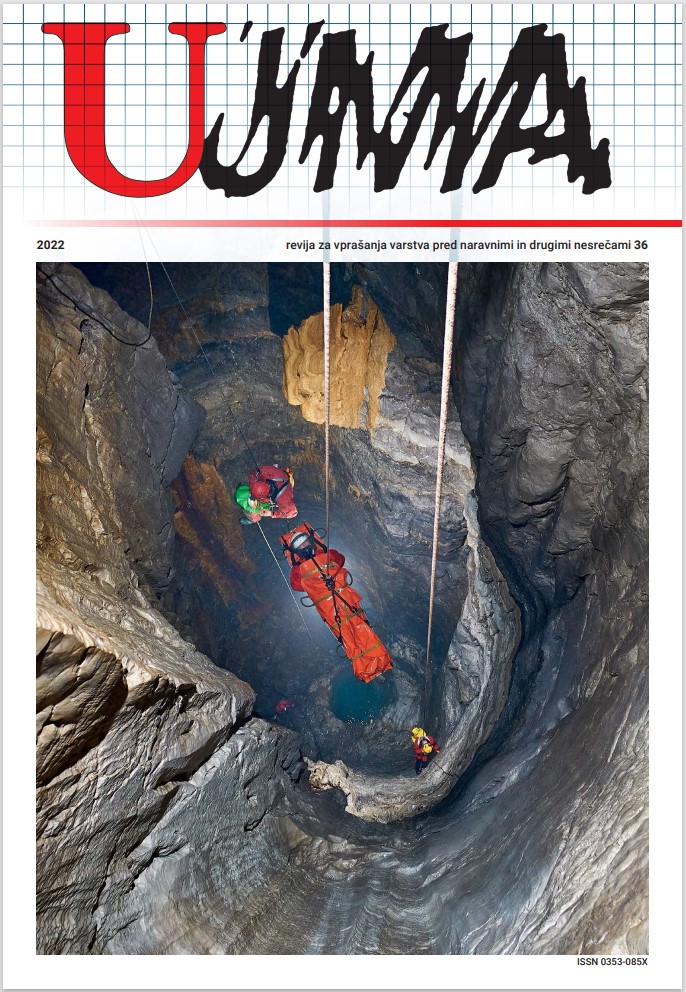GLOBAL CLIMATE CONDITIONS IN 2021
Abstract
The year 2021 was the seventh warmest year on record, in spite of a La Niña event, and was warmer than previous years influenced by La Niña. The average global temperature in 2021 was about 1.1°C above the pre-industrial level, and it was the seventh consecutive year where the global temperature has been over 1.1°C above the pre-industrial level. In 2021 record-high temperatures over land surfaces were measured across parts of northern Africa, southern Asia, and southern South America; the upper ocean heat was at a record high. The Antarctic ozone hole was intense and persistent. We will remember 2021 for the record-shattering temperature of nearly 50°C in Canada, comparable to the values reported in the hot Saharan Desert of Algeria; exceptional rainfall; and deadly flooding in Asia and Europe, as well as drought in parts of Africa and South America. 2021 had above-average global tropical cyclone activity with a total of 94 named storms, but the lowest number of global hurricane-strength tropical cyclones on record, only 37. Climate change impacts and weather-related hazards had life-changing and devastating impacts on communities on every single continent.
References
AMS, 2020. Explaining extreme events of 2018 Froma a Vlimate Perspective, Special Supplement to the Bulletin of the American Meteorological Society, Vol 101, No. 1.
Cegnar, T., 2017. Podnebne razmere v svetu leta 2016, Ujma, št. 31, letnik 2017, 8–15. http://www.sos112.si/slo/page.php?src=/ujma/article_2017.html.
Cegnar, T., 2018. Podnebne razmere v svetu leta 2017, Ujma, št. 32, letnik 2018, 8–21. http://www.sos112.si/slo/page.php?src=/ujma/article_2018.html.
Cegnar, T., 2019. Podnebne razmere v svetu leta 2018, Ujma, št. 33, letnik 2019, 8–23. http://www.sos112.si/slo/page.php?src=/ujma/article_2019.html.
Cegnar, T., 2021. Podnebne razmere v svetu v letih 2019 in 2020, Ujma, št. 34-35, letnik 2021, 12–33. https://www.gov.si/assets/organi-v-sestavi/URSZR/Publikacija/Ujma/2020/2021/Podnebnerazmere-v-svetu-v-letih-2019-in-2020.pdf.
Copernicus, Atmosphere, 2022. https://atmosphere.copernicus.eu/copernicus-tracks-ozone-hole-closure-2021-one-longest-lived-antarctic-ozone-holes-record.
Copernicus, Climate Change Service, 2022. European State of the Climate 2021. https://climate.copernicus.eu/esotc/2021.
Copernicus, Climate Change Service, 2022. https://climate.copernicus.eu/climate-bulletins.
Environment and Climate Change Canada, 2022. https://exp-studies.tor.ec.gc.ca/cgi-bin/selectMap.
IPCC, 2018. Special report: Global Warming of 1.5 º, Summary for Policymakers. https://www.ipcc.ch/sr15/chapter/summary-for-policy-makers/.
NOAA, Climate.gov, 2021 Antarctic ozone hole larger than average, 2022. https://www.climate.gov/news-features/understanding-climate/2021-antarctic-ozone-hole-larger-average.
NSIDC (National Snow & Ice data Center), 2022. https://nsidc.org/news.
UNFCCC, 2016. First steps to a safer future: Introducing The United Nations Framework Convention on Climate Change. https://unfccc.int/essential_background/convention/items/6036.php.
WMO, 2021. WMO Greenhouse Gas Bulletin, 2019, No. 17, 25 October 2021. https://library.wmo.int/doc_num.php?explnum_id=10904.
WMO, 2022. State of the Global Climate 2021: WMO-No. 1290. https://library.wmo.int/index.php?lvl=notice_display&id=22080#.Yqrrh3ZBy70.
Downloads
Published
Issue
Section
License
Copyright (c) 2023 Ujma

This work is licensed under a Creative Commons Attribution-NonCommercial-NoDerivatives 4.0 International License.
The articles are made available to the public under Creative Commons Attribution-NonCommercial-NoDerivatives 4.0 International (CC BY-NC-ND 4.0).


